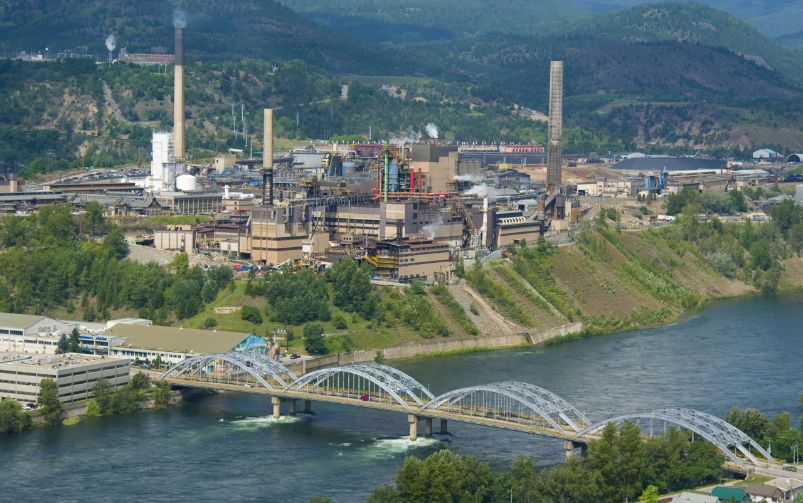Alamos Gold's Lynn Lake mine is expected to produce an average of 176,000 ounces of gold per year for its first 10 years of production. Courtesy of Alamos Gold via X.
Welcome back to your weekly mining news recap, where we catch you up on some of the news you may have missed. This week’s headlines include Nova Scotia close to ending its ban on uranium mining and fracking, global energy demand surging in 2024 amid rising temperatures, and the Horne 5 project in Quebec receiving strong community support.
Following the First Ministers’ meeting on March 21, Prime Minister Mark Carney announced measures to spark economic development, including removing duplicative federal reviews for major mining and infrastructure projects by recognizing provincial and territorial assessments. Other measures include a federal commitment of $200 million to advance the Cedar LNG project in B.C., along with a $175 million investment in the Hudson Bay Railway and Manitoba’s Port of Churchill to open new transportation corridors and foster economic growth and reconciliation in the Arctic.
A groundbreaking ceremony was held on March 25 to mark the start of construction on Alamos Gold’s Lynn Lake gold project, which, once operational, would be Manitoba’s first new mine to open in 15 years. The mine will span two sites and have a 27-year lifespan, creating over 600 jobs during construction and 450 during operation. Initial production at Lynn Lake is expected during the first half of 2028.
British Columbia has introduced a new framework for mining claims consultation, which now requires companies to notify First Nations during the claim-staking phase, as reported by The Canadian Press. B.C. Assembly of First Nations regional chief Terry Teegee argued that the framework falls short of the collaborative approach detailed in the province’s Indigenous rights law and warned that it could overwhelm First Nations offices and limit their influence over mineral permits.
Nova Scotia’s Bill 6, which paves the way for lifting provincial bans on uranium mining and fracking, has passed its third and final reading at the legislature, as reported by CBC News. Nova Scotia Premier Tim Houston’s government sees this as a step towards financial self-sufficiency for the province amid trade tensions with the United States. However, the bill has faced considerable opposition, with concerns over insufficient consultation with Mi’kmaw chiefs and public pushback, especially regarding fracking.
A report published this week by the International Energy Agency found that global energy demand grew by 2.2 per cent in 2024, driven by record global temperatures increasing cooling demand, alongside higher industrial consumption, the electrification of transport and rapid growth in data centres and artificial intelligence. Renewable energy and nuclear power accounted for 80 per cent of global electricity growth.
Falco Resources has shared the results of an independent survey, conducted by Léger, indicating strong community support for the proposed Horne 5 gold-silver-copper-zinc underground project in Quebec, as reported by Canadian Mining Journal. The survey found that 72 per cent of Rouyn-Noranda residents and 74 per cent of Abitibi-Témiscamingue residents were in favour of the Horne 5 project. In January, Quebec’s public consultation agency deemed the project “unacceptable” due to insufficient data on risks, including blasting, seismic activity and possible impacts on the local population.
Data from S&P Global revealed that gold dominated worldwide mergers and acquisitions (M&A) activity in the metals and mining sector in 2024, with 43 transactions focused on gold, totalling US$19.31 billion. Some of the year’s largest gold-focused transactions involved Canadian companies and projects, including Gold Fields’ majority acquisition of Osisko Mining and Orla Mining’s acquisition of the Musselwhite gold mine from Newmont. S&P expects geopolitical uncertainties to fuel M&A activity in 2025, with gold continuing to be a primary target.
Nouveau Monde Graphite (NMG) has released an updated feasibility study for its second phase Matawinie mine and Bécancour battery material plant in Quebec, confirming the projects are technically and economically feasible. NMG is now moving towards project financing and a final investment decision, with commercial production possible within three years.
Researchers at the University of Alberta have developed a new anode material for seawater-based batteries, made from polymer nanosheets and carbon nanotubes. Aqueous batteries have better energy storage capabilities than lithium-ion batteries, according to the researchers, and have the potential to be safer, more affordable and environmentally friendly in terms of production and disposal. The research can be accessed here.
Emily Tetzlaff, who is now with Wenco, discussed the importance of heat management programs in mining with Ailbhe Goodbody in the February issue of CIM Magazine, highlighting how unique mining environments, high workloads and protective gear can exacerbate heat stress risks for workers. These conditions can hinder the body’s ability to regulate heat, increasing the risk of heat-related illnesses. Occupational heat management plans, including training, reporting and hazard controls, are essential for minimizing risks.
That’s all for this week. If you’ve got feedback, you can always reach us at editor@cim.org. If you’ve got something to add, why not join the conversation on our Facebook, Twitter, LinkedIn or Instagram pages?




